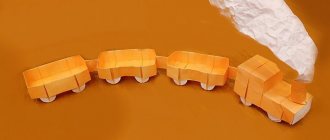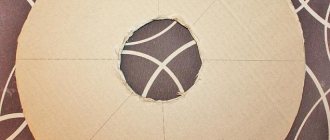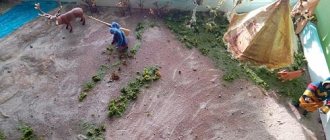We will do it the same way or as you need https://salim-rai.ru
left by Salim Rai, date 2016-03-22 16:59:36
Your pontoon projects are interesting. I want you to see how I made a pontoon out of four floats from Yantar catamarans. https://zhivem-ne-zrja.ru/sdelal-sam/ponton-svoimi-rukami.html
left by Alexander, date 2017-01-12 18:18:24
A pontoon (French pontoon) is a non-self-propelled vessel, a means of supporting weights on the water, with or without a deck. Durable and at the same time quite lightweight structures.
Pontoons can be reinforced concrete, metal, plastic, inflatable and others. They are used as floating supports for bridges, ferries, and berths.
Pontoons find their application not only in industry, but are also actively used by ordinary consumers.
Modular polyethylene pontoons
The best option is floating plastic structures, the elements of which are connected to each other by special fastenings through holes around the perimeter. Such pontoons do not require any special maintenance and are not affected by river or sea water or ice. If necessary, they are easy to assemble, dismantle and install in another place. Such plastic structures are made from low-density polyethylene (HDPE) with the addition of special compounds against exposure to direct sunlight and salt water.
When installing piers, moorings, floating platforms, additional accessories - handrails, gangways, bollards and others. Everyone can improve their harbor or pier the way they want.
Today you can buy a wide variety of composite plastic blocks (modules) for pontoons to suit every taste and budget.
But if buying a ready-made plastic pontoon is not part of your plans, then you can try making a pontoon with your own hands . More on this later..
Tire pier
The pier, located on supports made of car tires, is a durable structure, the construction of which does not require labor-intensive operations of screwing or driving metal piles.
I have had a pier with supports made from truck tires for 8 years. The wheels were secured to each other with stainless steel bolts and wide washers. Sand was poured inside, because it fills all the cavities inside the tires, and the structure becomes monumental. A year later I added sand, because over time it becomes compacted and washed out.
And here is the pier structure that user Alextr61 built after considering all possible options.
It is based on heavy tires from a 40-ton BelAZ vehicle. The author of the design additionally secured the already massive tires with galvanized pipes and covered them with stones. This is the pier he ended up with.
Pontoon made of plastic barrels
The strength of the simplest structure on barrels (for example, a raft) is achieved using a supporting frame using elements that will provide diagonal, longitudinal and transverse rigidity of the structure.
The frame of such a pontoon can be made of steel, aluminum, wood, or plastic.
On the basis of such a pontoon from plastic barrels, you can build a pier for fishing or diving. By adding certain accessories, you can make a raft with sides or even a catamaran.
Good stability on the water allows you to use the pontoon raft as a mobile vehicle for recreation on the water. You can easily install a small outboard motor on a self-propelled pontoon.
Foam pontoon
It is possible to construct a pontoon from foam plastic. A frame is made from boards, and two “skis” are made from dense foam plastic (penoplex). This is one of the most successful designs for a motor raft. Moreover, it is easy to operate.
Another option is to make a wooden raft and cover it with foam on the bottom.
Pontoon from other containers
You can make pontoon floats from various plastic sealed containers. Plastic cans, cubes, barrels, plastic boxes filled with polystyrene foam and polyurethane foam, and so on are used. They are more difficult to attach, but you can achieve a high landing of the raft (pontoon) above the water. You can also make a pontoon from empty sealed metal barrels.
There are also homemade pontoons made from plastic pipes.
Wooden pontoons
Parts for the pontoons are cut out using a cardboard pattern that resembles a cone when unwrapped; plywood impregnated with drying oil is easily bent. It is used to cover a frame already built from slats .
The skin and deck are made from the same plywood, or thin boards, positioned so that the distance between parallel pontoons is 1 meter. The propeller drive of the catamaran is made from bicycle parts. Bicycle wheels are also suitable for paddle wheels, preferably three-wheeled ones for children. The seat can also be constructed from plywood, slats, and boards. 4-6 door handles can be screwed onto the edges for attachment to a dock or for carrying.
You can make a classic pontoon raft from logs , especially if there is easily accessible wood nearby.
Metal pontoons
Often pontoons are made from sheet metal or steel pipes . This is especially true for those who have a lot of unused used scrap metal.
The easiest way is to use large-diameter pipes that are welded at the ends. The result is long cylindrical floats. Then we connect them together with a frame and get a metal pontoon, onto which it is not difficult to attach a platform made of wood or, again, from sheets of steel or metal mesh.
Application
Do-it-yourself pontoons made of various materials find a wide variety of applications:
- floating areas with barbecue for relaxing with friends;
- cafe on the water;
- berths for a catamaran, boat or jet ski;
- piers;
- fishing rafts;
- pontoons-catamarans for overcoming shallow waters;
- floating saunas on a pontoon;
- sites for various activities on the water;
- and even a house on a pontoon.
On such a raft, pier, or pontoon, made with your own hands, you can not only sunbathe, dive from it into the water (it is almost impossible to turn it over). You can transport cargo, inspect fish cages, and travel as if by ferry. A flotilla of pontoon rafts will allow you to arrange exciting competition games for speed or, say, figure driving.
Relax with pleasure, but do not forget to monitor the technical condition and periodically repair your homemade pontoon!
Pontoon calculation
Any pontoon must be pre-calculated . The most important thing is to calculate its carrying capacity. The total carrying capacity consists of the buoyancy of all its elements (floats) .
Even if you cannot calculate these parameters on paper, then measure in practice the carrying capacity of one element (a plastic barrel, a bottle, a piece of foam plastic, that is, what you are making a pontoon from). Then use as many elements as possible so that the total lifting capacity is no less than what you need. But it is highly advisable to make another reserve of about 30-50%.
Example of a simple calculation: You want to make a pontoon that holds 1.5 tons on the water. Let's say one barrel can hold 150 kg of weight. Then you will need at least 10 barrels. But it is advisable to use 13-15 barrels with a reserve.
Ideally, you also need to calculate the pontoon for frame rigidity , buoyancy and capsizing . In practice, not everyone will be able to do this. Our advice: do everything with a large margin (2-3 times), then you will feel calm on the water. Or trust the professionals who make pontoons.
Many owners of country cottages have bodies of water nearby, such as rivers and lakes. Many of these owners are also fishing enthusiasts. Therefore, the issue of constructing a berth is very relevant in such cases. The berth can be built either stationary, using a foundation on screw piles, or floating. In the latter case, the most convenient option is to use pontoons as a basis, which will keep the pier afloat. In the article we will look at what types of pontoons exist today, compare them and show how to make pontoons from barrels and plastic bottles with your own hands.
The purpose of pontoons is to support various structures afloat. Such structures can be piers, landing stages, bridges, ferries and even houses. Today there are many types of pontoons: inflatable, plastic, metal and even reinforced concrete.
How to make a pier on a pond.
If your garden plot has a man-made pond or access to a natural body of water, then for you, as the owner, the relevant question is how to arrange a convenient and aesthetic access to the water. And if you haven’t gotten around to landscaping the coastal zone yet, then the ideas discussed in this article may be useful to you.
A home pier is not only a convenient berth for a boat or small motor boat. This is also a comfortable building structure for fishing, as well as a decorative element that can make a significant contribution to the overall concept of landscape design. Therefore, its creation must be approached technically competently, not forgetting the creative component.
A home pier can be a permanent permanent structure based on piles.
The pier structure can also be floating. In this case we are talking about a pontoon pier.
First, let's look at the features of a pontoon pier.
Reinforced concrete pontoons
Such pontoons are made from concrete of a special composition, reinforced with metal structures. To increase service life, all steel elements are galvanized. Concrete pontoons are tied on top with a wooden frame and covered with decking. Anchors are used to fix the location of the pontoons. It is very difficult to make a concrete pontoon with your own hands, so most often such structures are ordered from specialized companies.
Scheme of a berth on concrete pontoons
Choosing boards for work
Before production begins, it is necessary to once again ensure that the boards are absolutely suitable for the job. Next, for each board you need to measure the required length and carefully cut them at an angle of 45 degrees. These boards will go to the bow of the boat.
After this, you need to plan them and check that the boards connected to each other do not have gaps. Then treat the ends with an antiseptic.
The next step is to prepare the bow of the boat, using a triangular block. It should be one and a half times longer than the width of the sides. The timber is also planed and covered with a layer of antiseptic.
Further instructions for making a boat with your own hands is to select a suitable board for the stern of the boat. Do not neglect the supply, because it is better to cut off the excess later than to search and start all over again.
Plastic pontoons
This type of pontoon is manufactured on an industrial scale and sold as a finished product in the following versions:
1. Modular plastic pontoons.
Berth made of plastic modular pontoons
Thanks to their cellular structure, such pontoons can take on almost any shape. The modules are attached to each other using special fasteners, the connectors for which are located around the perimeter of the modules. In addition to the blocks themselves, you can purchase additional elements necessary to organize a full-fledged berth, such as handrails and gangways.
Plastic modular pontoons
In addition to the advantages inherent in all plastic pontoons, this type of pontoon is positively distinguished by the possibility of quick dismantling and installation in a new location, as well as the fact that assembly does not require professional training. We will briefly show the process of installing a typical berth made of plastic modular pontoons.
We bring plastic modules
Assembling the first three modules on shore
Launching the assembled platform into the water
Phased installation of new modules
2. Pontoons made of plastic pipes, both in monolithic and collapsible versions;
Monolithic pontoon made of plastic pipes
Collapsible pontoon made of polyethylene pipes
Pontoon frame made of pipes
The thickness of the pipes can vary from 300 to 1000 mm, and the width and length up to 10-12 meters. Such pontoons can withstand up to 12 tons of load. Making your own pontoon from pipes is not so easy because you need to get completely sealed plastic pipes of quite a large diameter somewhere, and also prepare frame elements to fit their dimensions.
If you decide to build a pontoon for building a house on the water, then we recommend that you read the article at the link. It discusses the basic principles of designing a landing stage, and also presents the plan and design of such a house according to one of the projects brought to life.
The following points should be noted as advantages of plastic pontoons:
Boat making process
To cover the boat, you need to prepare plastic barrels with a volume of 200 liters.
Using a grinder, cut off the bottom and neck, then spread them lengthwise into sheets.
In order for the boat to be reliable and have a high carrying capacity, its frame must be made of metal. To do this, you need to take a 10x10 mm square of arbitrary length and bend it at one edge into an arc.
The resulting blank will serve as the keel and stem. On the side, 2 bent strips are welded to it, which will form stringers.
Next, you need to fix the stringers exactly relative to the keel. To do this, you can use rope garters and wooden blocks. Having set the required shape of the boat, you need to weld angle frames between the stringers and the keel. Then a transom frame made of a profile pipe and a corner is welded into the rear of the boat. If you plan to install a motor in the future, then the shape and height of the transom must be calculated according to its parameters.
A corner with cutouts along the edges for a thin profile is welded perpendicular to the top of the keel. Then fender bars from a profile pipe are welded from the transom to the corner on the bow. Between them, closer to the nose, a spacer beam is welded. It can be made from a corner or profile pipe.
To add rigidity to the hull, it is necessary to weld spacers between the bottom frames. This is guaranteed to prevent their deformation under load. Next you need to lengthen the frames with corners to the fender.
To make the boat even stiffer and more comfortable for fishing, you need to expand the fender beam. To do this, a profile pipe is laid parallel to it inside the boat from the transom to the beam and welded with short jumpers using half beams to the beam.
Next, you need to weld the transom frame with sheet steel. Due to this, it will be possible to install any outboard motor on it without fear that it will fall off, so it is better not to use plastic. For rigidity, you can weld a couple of gussets between the transom frame and the fender.
To have a surface for attaching the skin, it is necessary to expand the keel, stringers and fenders. To do this, a strip is added to them. The skeleton of the boat is then carefully painted.
After the paint has dried, it is necessary to cover the frame with plastic sheets from barrels. To do this, the frame is coated with silicone sealant and sheets are laid on it. They are screwed with metal screws. In places on the bow of the boat where it is necessary to bend the plastic, you can first cut out a pattern from cardboard and then cut the skin according to it. All seams between the sheathing must be sealed with sealant. The deck of the boat is also lined with plastic.
After 1-3 days, when the sealant has completely dried according to the instructions, the boat can be launched and tested. If you use thin rolled metal in the manufacture of its frame, the vessel turns out to be quite liftable for two people. If necessary, it can be transported on a truck or trailer. For its full operation, you will need to make a second bottom flooring so as not to stand with your feet on the plastic covering, as it can be torn out. To do this, you can lay boards or plywood on the frame.
Pontoon pier made of barrels
So, how to make a pontoon from barrels with your own hands? Let's look at the step-by-step production of a small pontoon pier. For work we will need the following materials:
- 4 plastic or metal barrels;
- boards or waterproof plywood;
- timber with a side of 100 mm;
- timber with a side of 50 mm;
- rope;
- epoxy resin, alkyd paint.
It is worth noting that in the project it is best to use larch as wood. It is least susceptible to rotting when in constant contact with water. You can also use pine and oak. All lumber should be primed and painted. If plywood is used, the ends are coated with epoxy resin.
Preparation of materials for making a pontoon
The pontoon should be assembled as close to the water as possible, on the shore itself, so that when the pier is ready, there will be no problems dragging the finished pontoon into the water. The first step is to prepare a square frame with a side of 2.5 m. Four barrels can easily fit in it. To assemble the frame we use timber. To get a perfectly even square, you can insert a piece of timber into each of the four inner corners, or check the diagonals of the square with a tape measure before screwing on the frame parts.
Now you should prepare four 200-liter barrels. Many people have such metal barrels at their dachas. All that remains is to paint them and apply silicone or sealant along the edges of the cork. If you don’t have such barrels, then, of course, you can buy them at a hardware store. It is best to buy, as noted above, plastic barrels.
The third step is the installation of the internal parts of the pontoon frame. We place previously prepared barrels in the corners of the frame. The diameter of the barrel is about 580 mm, and the height is no more than a meter, so there should be no problems with placement. Now we install the internal bars in such a way that one edge of the barrel rests against the frame, and the second is on the installed beam.
Attaching the internal frame supports
Placing barrels in the pontoon
To secure the barrels more rigidly, it is necessary to install two more bars, placing them closely along the barrels. To level the barrels strictly horizontally, we place two more beams under the outer sides of the barrels.
Installation of barrel holders
For reliable fixation, we will fasten the frame bars together using corners and screws.
Fixing frame elements
The next step is to secure the installed barrels with ropes. To do this, you need to drill 6 holes in the frame for each barrel.
Fastening the pontoon barrels
We turn the completed structure over.
Assembled pontoon from metal barrels
While the pontoon does not weigh that much, we transfer it to the water.
We sew up the frame with boards or plywood.
Pier on stilts
Let's consider the design of a permanent pier, which is made on vertical piles screwed or driven into the bottom of the reservoir.
If you decide to make a stationary pier, a real pier, then work should begin during the winter cold. More precisely, during the period of winter frosts, when the reservoir is covered with a thick layer of ice. It is when standing on ice that the easiest way is to screw or drive piles into the bottom of the reservoir.
In winter, it is necessary to: drill through the ice, hammer in pipes, weld a metal frame, and lay plank flooring on the frame.
It is best to use screw piles. They are least susceptible to heaving forces. Considering that a not too massive pier structure will rest on the piles, they can be screwed to a sufficient depth with the help of two or three people, without resorting to the use of specialized equipment.
No need for technology. You need to turn it in winter, after drilling holes. The edges of the holes will help maintain the vertical level, providing an additional point of support. You need at least two people to twist, or better yet, three of them: two twist, the third stands with a level. And water will help a little in this case. It's not like wrapping it in dry clay.
After analyzing the practical recommendations of users of our portal, we can come to the following conclusions:
Wood should be treated with antiseptics from the SCA group. Their actions will definitely be enough for 10-15 years.
Using the above recommendations, you can build not only a pier, but also a small decorative bridge, as one of our users did.
The bridge is almost finished. I used a pipe - 57x3 mm, drove it into the silt to a depth of 1.5 m. I poured sand mixture into the pipe, after which I compacted it (it was winter). It turned out strong. This spring I will finish the canopy and lay the boards.
If you would like to learn more about the types of home piers, as well as learn about the materials from which these coastal structures should be built, we recommend visiting the corresponding topic, open for discussion on our portal. After reading useful articles posted on the pages of FORUMHOUSE, you will learn how to make your own, as well as how to screw screw piles into the ground. In addition, we present to your attention a video on how to properly create a multifunctional pond that will ideally fit into the landscape design of a personal plot.
Source
Pontoons made from plastic bottles
This type of pontoon is perhaps the simplest to implement. To implement a pier with pontoons made of plastic bottles, you will need a considerable number of empty bottles. Two-liter bottles are best suited for these purposes; about 350 of them may be required - it all depends on the size of the pier. The number of plastic bottles also depends on their volume; if you use one and a half liter bottles, you may need much more of them.
Before making pontoons from bottles, you should make sure that each bottle is airtight. To do this, just press on the bottle; if the air does not come out of it and it remains solid, then such a bottle can be safely used in further work.
Pontoons made from plastic bottles
You should not make one large pontoon for the entire pier; the base of the pier should be supported by several small pontoons, each of which can contain from 60 to 100 bottles. To assemble the pontoon you will need, in addition to bottles, boards for assembling the frame, ropes and bags. A standard bag fits on average about 30 one and a half liter bottles, which are stacked in two layers in a vertical position. The more such bags there are in the pontoon, the more weight it can withstand. The easiest way to attach bags to the frame is to use ropes.
If you decide to build not a floating pier from pontoons, but a stationary one using concrete structures, then be sure to read the article about fiberglass reinforcement, which is currently a new product on the Russian market. This type of reinforcement is ideal for conditions of high humidity, so it is usually used in the construction of bridges and other floating structures.
The location of the pontoons depends on the berth configuration. Dock decking is best made from boards and foam. When the pier is completely ready, to prevent it from being blown away by the wind, you should install a couple of piles on the shore, to which the floating structure should be secured.
Using a similar principle, you can build pontoons yourself from car inner tubes or foam plastic.
Repair
For boats that you have built, your best option is to do the repair work yourself. You should first inspect the boat, find the cause (hole, etc.) and be sure to correct the existing defect.
You can repair the hole with pieces of boards, after degreasing the surface and gluing a new piece of wood. If the problem is more serious, then it would be best to contact a specialist who can carry out professional repair work.
Thus, now you know how to make a boat yourself and repair it at home.











